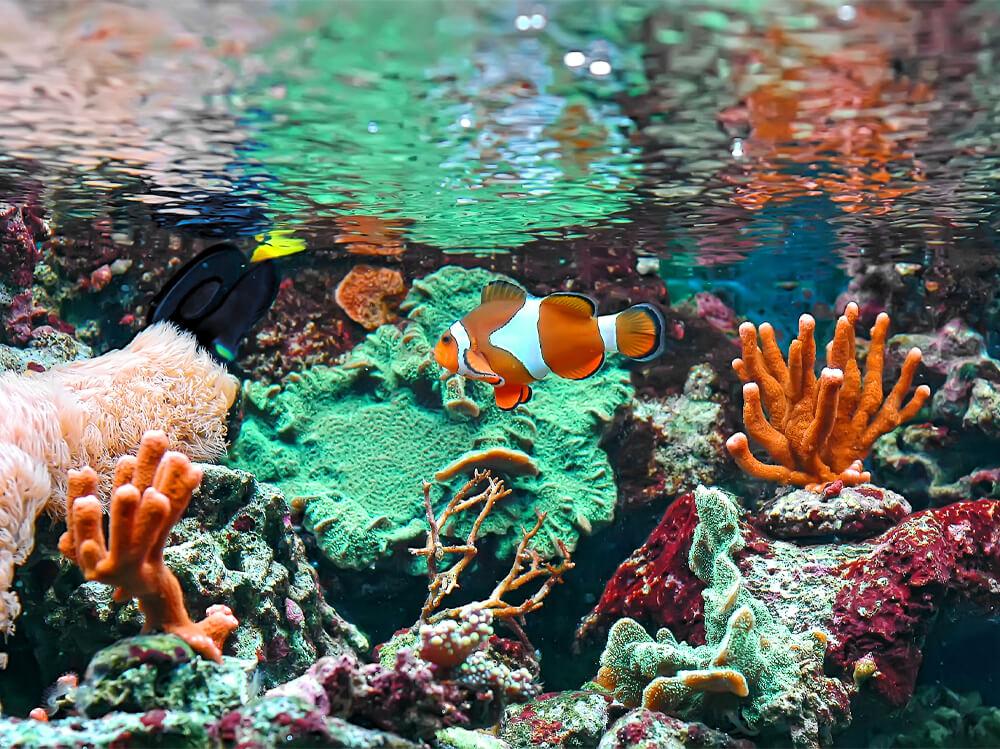What eats reef tank flatworms?
Reef tank flatworms can be a pest in marine aquariums and if left alone they can multiply and reach plague proportions. Here’s how to control them.
Flatworm eating fish
Many wrasses eat flatworms and of them, the sixline or pyjama wrasse is one the best. Its stays small is reef safe, cheap, and widely available. It doesn’t often jump out like many wrasses can and can be housed in smaller reefer tanks too. It’s also one of the best first marine fish for beginners.
Mandarins or dragonettes (also known as scooter blennies,) are endearing bottom-dwelling reef fish known for their lovely markings, Chameleon-like eyes and the way they hop along the bottom. All dragonettes will eat flatworms but the Psychedelic mandarin and Pink scooter blenny are the best. A scooter and a sixline wrasse can both be added at the same time for flatworm plagues.
Flatworm eating invertebrates
There is a specialised flatworm eating invertebrate called the Blue velvet nudibranch, which is an otherworldly looking sea slug that you can add to the tank to eat flatworms. They aren’t commonly available and can themselves be delicate to keep. They only eat flatworms too so once they are gone the slug will starve. The best way around this is to return it to the store once its job is done, and the vendor should have a list of other aquarists with flatworm problems who can offer it a new, flatworm plagued home. But reefkeepers do have mixed results with them.
Where do reef tank flatworms come from?
Flatworms come in on corals imported from the wild and then infest wholesale and retail marine facilities before being accidentally introduced to reef tanks as hitchhikers on corals and live rock. 100% prevention can be difficult although it’s wise to dip all newly purchased corals and in a perfect world, quarantine them, observing the coral and dipping as necessary. They can often be seen on the flesh of large polyp stony corals and soft corals. Not to be confused with acropora eating flatworms, which are a smaller, red flatworm that only infects acropora corals. These are larger, rust brown flatworms.
Flatworm controllers like sixline wrasses can then offer another line of defence from either living in the coral quarantine tank or the main tank where they will hunt them out and eat them as they find them. Flatworm plagues are most common in reef tanks without wrasses, where just a few are introduced but they quickly multiply due to having no predation pressures.
The cure for flatworms
A combination of coral dips, quarantine and flatworm predators is the best way to control flatworms. Often living on the bottom and responding to light, in severe cases, the whole substrate should be removed and the majority of the worms removed via a syphon tube. Regular syphoning and manual removal will also help control the plague.
Flatworm treatments like Flatworm Exit are also available.









